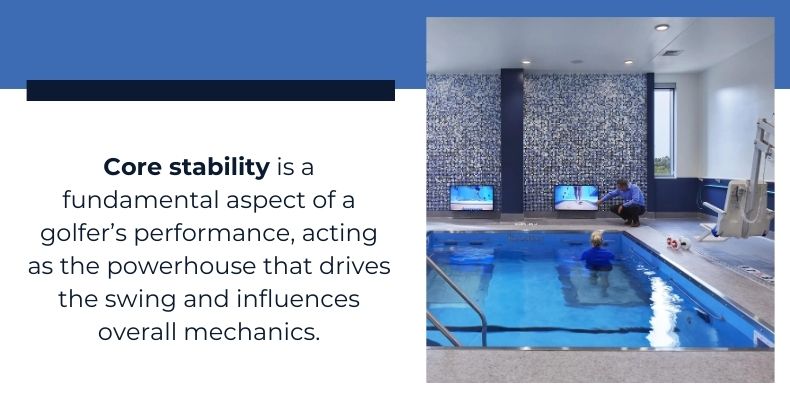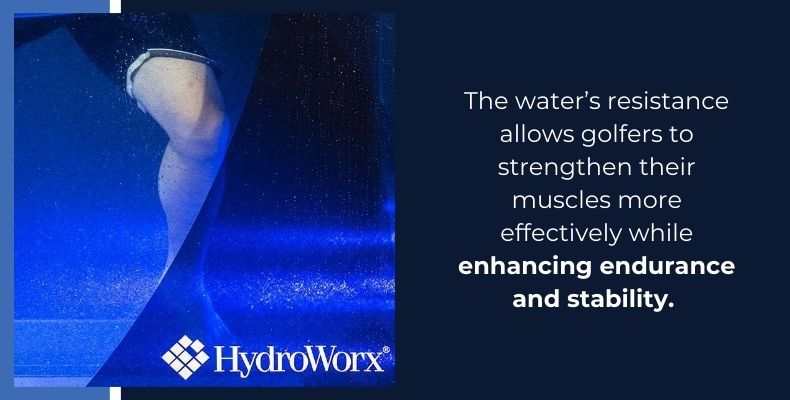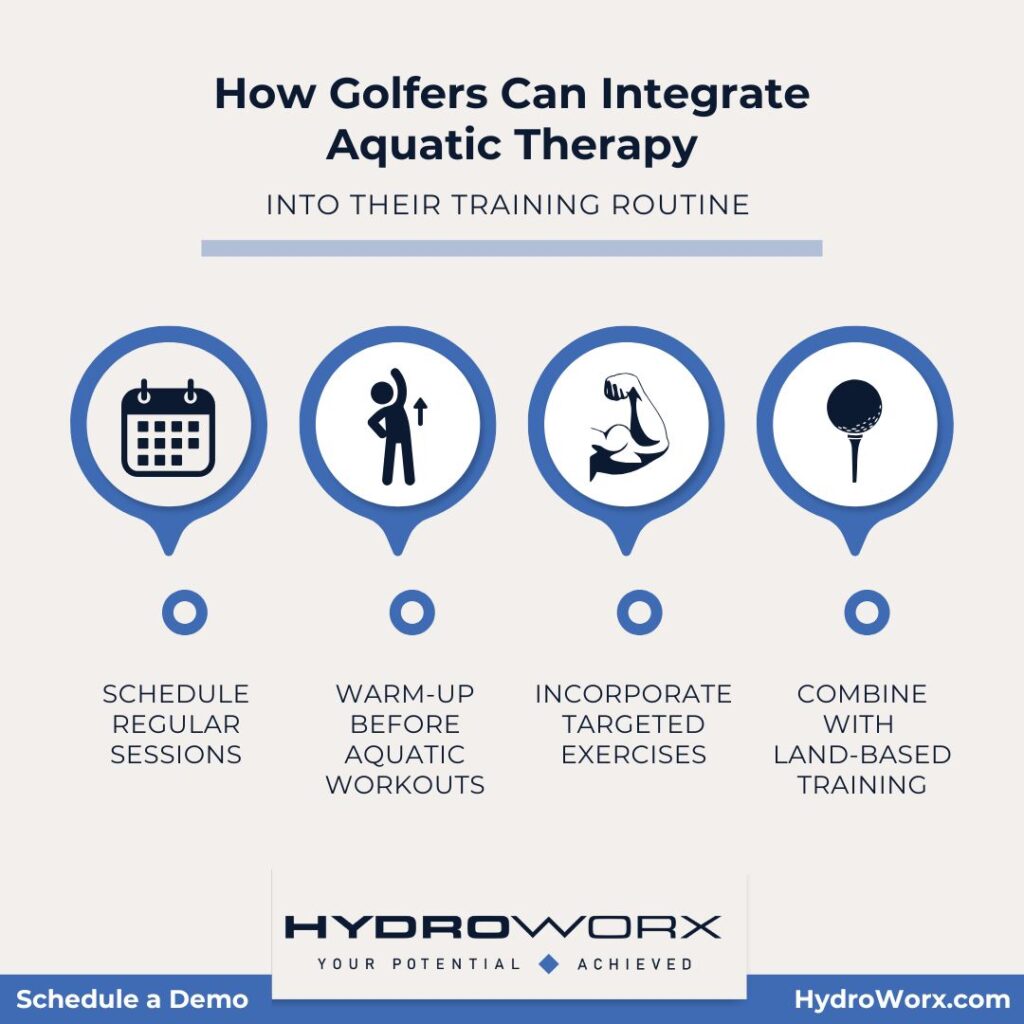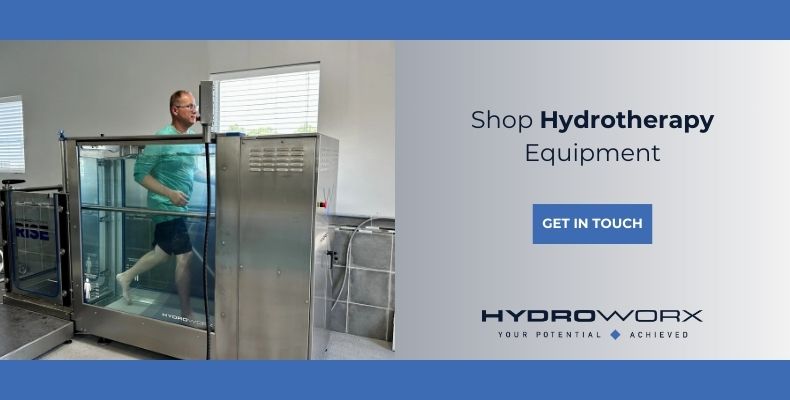Aquatic Therapy Techniques for Golfers: Improving Core Stability and Range of Motion
Golf is a sport that demands precision, strength, and flexibility, making core stability and range of motion essential for optimal performance. A strong core not only enhances swing mechanics but also contributes to maintaining balance and generating power during each shot. However, golfers often struggle with injuries and limitations in flexibility, which can adversely affect their game.
Aquatic therapy is an effective method to address these challenges. Utilizing the unique properties of water, this therapy provides a low-impact environment that reduces stress on joints while simultaneously enhancing core strength and flexibility. The buoyancy of water supports movement, allowing golfers to perform exercises that may be difficult or painful on land.
Keep reading to learn more from HydroWorx as we explore various aquatic therapy techniques tailored for golfers, emphasizing their ability to improve core stability and range of motion, ultimately leading to enhanced performance on the course.

The Importance of Core Stability in Golf
Core stability is a fundamental aspect of a golfer’s performance, acting as the powerhouse that drives the swing and influences overall mechanics. A strong core helps maintain balance during the swing, enabling golfers to generate maximum power and accuracy without sacrificing control. When golfers have good core stability, they can rotate effectively, which is crucial for achieving a consistent and powerful swing.
Common injuries related to poor core stability include lower back pain, which can lead to decreased performance and time away from the game. Strengthening the core not only minimizes the risk of these injuries but also promotes better posture, essential for executing the perfect swing.
Incorporating exercises that focus on core stability into a golfer’s training regimen can significantly improve their overall performance. This emphasizes the need for targeted training to enhance core strength and stability, helping golfers reach their full potential on the course.

Benefits of Aquatic Therapy for Golfers
Aquatic therapy offers several unique benefits that cater specifically to golfers looking to improve their game. The buoyancy of water significantly reduces the impact on joints, allowing golfers to engage in strength and flexibility exercises with minimal risk of injury. This low-impact environment is particularly advantageous for those recovering from injuries or managing chronic discomfort, as it enables them to maintain fitness levels without exacerbating their conditions.
Additionally, water provides natural resistance, which can be adjusted according to the intensity of movement. This resistance allows golfers to strengthen their muscles more effectively while enhancing endurance and stability.
Key benefits of aquatic therapy for golfers include:
- Joint Support: Reduced stress on knees, hips, and back.
- Increased Strength: Enhanced core strength and muscle engagement.
- Improved Flexibility: Opportunities for dynamic stretching and mobility exercises.
- Faster Recovery: The soothing properties of water can aid muscle recovery post-exercise.

Aquatic Therapy Techniques for Core Stability
Aquatic therapy techniques designed to improve core stability are essential for golfers looking to enhance their game. Here are several effective exercises that can be easily incorporated into aquatic therapy sessions:
- Water Planks: Stand in water at waist depth and extend arms in front while maintaining a straight line from head to heels. Engage the core and hold this position to develop stability and strength.
- Opposite Arm and Leg Raises: While standing in the water, lift one leg behind while extending the opposite arm forward. This exercise challenges balance and targets the core, enhancing stability.
- Aqua Russian Twists: In waist-deep water, hold a water buoy or medicine ball and engage the core while twisting the torso from side to side. This technique builds rotational strength essential for a powerful swing.
- Water Lunges: Perform lunges while moving through the water. The resistance from water forces the core to engage to maintain balance, providing a comprehensive workout that targets various muscle groups.
Enhancing Range of Motion Through Aquatic Therapy
Aquatic therapy plays a vital role in improving range of motion for golfers, essential for executing a fluid and effective swing. The buoyancy of water provides a supportive environment that allows golfers to perform stretches and dynamic movements with less strain on their joints. This low-impact setting is ideal for increasing flexibility, as water reduces the gravitational force acting on the body, enabling a broader range of motion.
Exercises such as water-assisted stretches, where golfers use the water’s buoyancy to facilitate deeper stretches, can significantly enhance flexibility in key muscle groups, such as the hips, shoulders, and spine. Additionally, dynamic movements like water leg swings and arm circles promote functional mobility vital for maintaining a full swing. By regularly practicing these aquatic techniques, golfers can attain improved flexibility, contribute to better swing mechanics, and enhance overall performance on the course.

Integrating Aquatic Therapy Into a Golfer’s Training Regimen
Incorporating aquatic therapy into a golfer’s training regimen can be done seamlessly, enhancing core stability and flexibility while ensuring a low-impact workout. Golfers should aim to include aquatic sessions at least two to three times per week, complementing their regular training routine.
To start, golfers can focus on dedicated exercises that target the core, enhance flexibility, and promote recovery. For instance, a session might begin with warm-up stretches in the water, followed by a series of targeted core exercises, and conclude with dynamic stretching to enhance range of motion.
Consistency is key; maintaining these sessions will yield significant improvements in performance, recovery, and injury prevention. By embracing aquatic therapy as a staple in their training, golfers can maximize their potential and enjoy the game more fully.
Invest in Hydrotherapy Equipment for Golfers
Elevate your facility’s offerings with our state-of-the-art hydrotherapy equipment designed specifically for sports performance and rehabilitation. Whether you operate a sports facility or a rehabilitation center, our hydrotherapy equipment is perfect for helping golfers and other athletes achieve their performance goals while minimizing injury risks. Contact us today to learn more.

